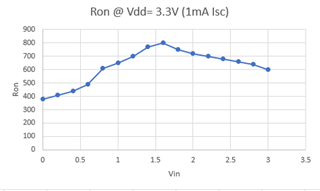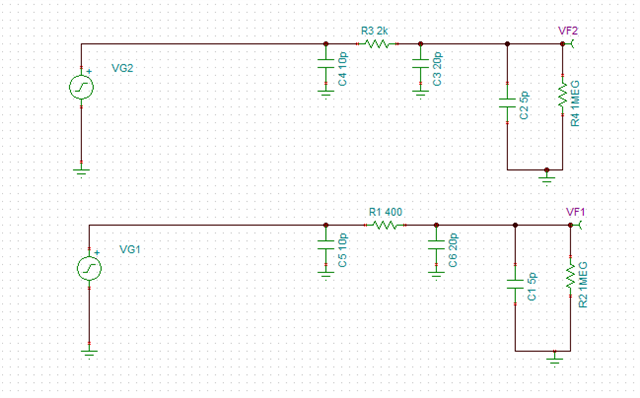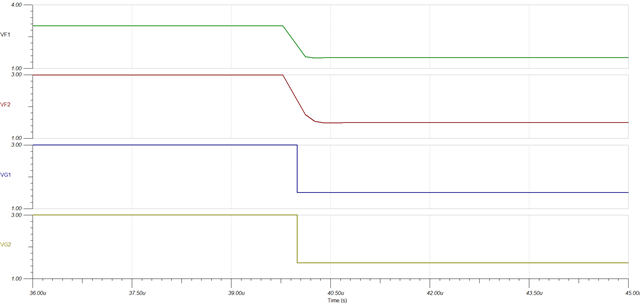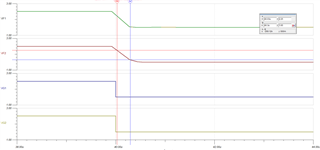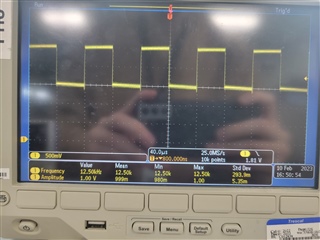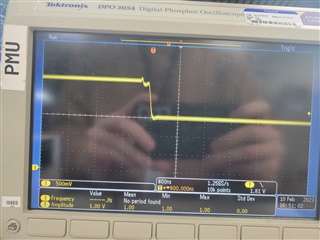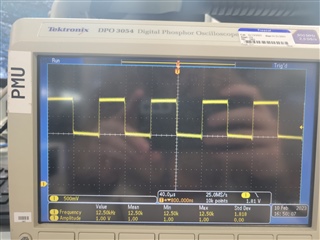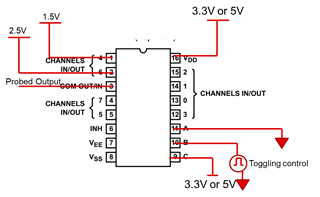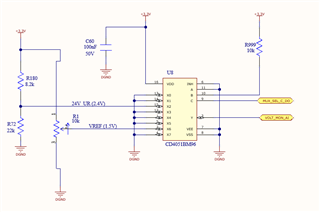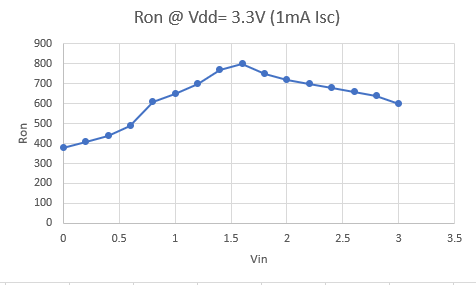For some reason it doesn't recognize this part number.
I recently edited a design we have been manufacturing for over a decade due to some product shortages. I had to change the voltage rail from +5v to +3.3Vdc. The device is being used as a multiplexar of analog signals into the microcontroller ADC. One of the legs has a severe decay of the signal after switching as well as some non linear behavior.
The analog signals are fairly static (mostly power supply monitoring) with voltages ranging from 360mV to 1.75 volts. The datasheet says that it should operate in these conditions without error. I am exploring the option that these might be fake parts and failure analysis from TI but have yet to find the smoking gun. Any thoughts?



